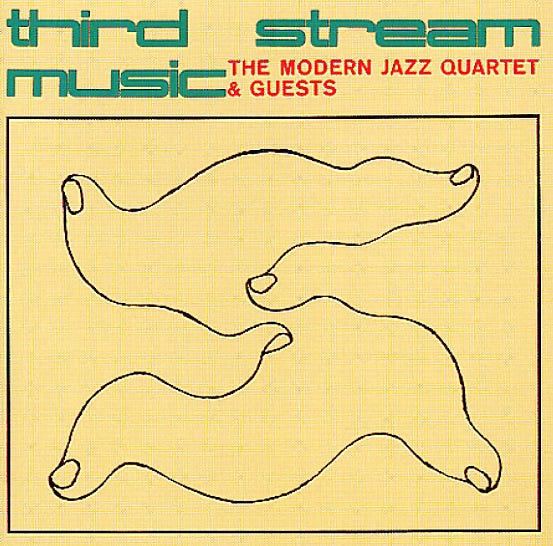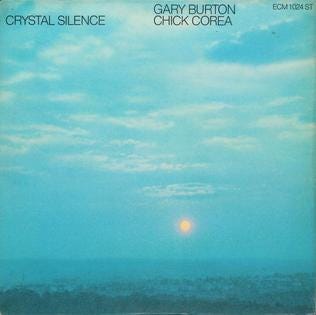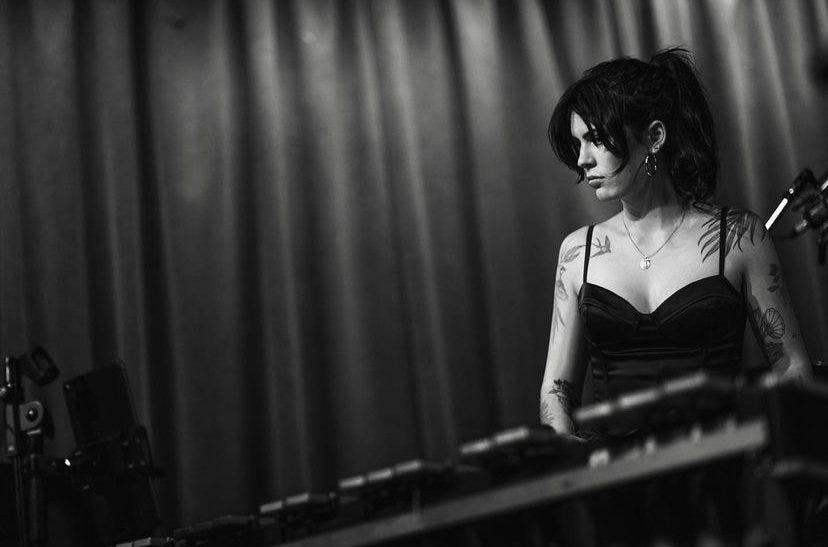Jalen Baker: Blindfold Test
Welcome to the first Night and Day "Blindfold Test" with Jalen Baker.
(Houston vibraphonist, composer, and bandleader, Jalen Baker)
Welcome to the first “Blindfold Test” for Night and Day with Houston vibraphonist, composer, and bandleader, Jalen Baker. Originated by Downbeat magazine, a “blindfold test” is a listening test that challenges the featured artist to identify and discuss the music and musicians performing on selected recordings. No information is given to the artist in advance of the test. I will be doing more of these for Night and Day, not only with jazz musicians, but with musicians from all genres, as well as artists and writers.
Legend has it that in 1930, drummer Lionel Hampton became so intrigued by the crystalline sound of a vibraphone used to play NBC’s three-note station identification theme (G-E-C), he transported the unwieldy instrument to a recording session with the great Louis Armstrong, played vibes on the Louie’s rendition of “Memories of You,” and the rest is history. Decades later, Baker is using this unusual and beautiful sounding instrument to explore new realms in jazz, both with his trio, who enjoyed a two-year residency with DACAMERA, and his quartet, as heard on Baker’s critically acclaimed albums This is Me, This is Us (2021) and Be Still (2023).
On December 19, 7 p.m. at the historic Eldorado Ballroom, the Jalen Baker Quartet takes the stage for their first-ever live album recording. Joining Baker for this special performance are Paul Cornish on piano, Gavin Moolchan on drums, and Gabriel Godoy on bass. No tickets will be sold at the door, except for students, who receive a discount with ID.
(Scroll down for a Spotify playlist of the following tracks.)
Lionel Hampton
“Flying Home #2” (from Lionel Hampton and his Orchestra, Decca 78 rpm, 1944) featuring Lionel Hampton, vibraphone; Arnett Cobb, tenor saxophone, and Cat Anderson on trumpet.
(Less than a minute into the track) Lionel!
Extra points if you can name the sax player.
There’s no way I’m gonna get it . . . [a few seconds after the solo] Arnette Cobb!
[afterwards] How would you describe that music? Is it “jazz” or is it something else?
I think it’s jazz, but it’s also dance music. That was the goal of most big bands from that era. It’s very rhythmic. That was Lionel’s thing; he kind of played vibes like a drum, but also had a deep sense of melody and harmony. But you can tell he’s coming from the rhythmic side of things.
(Photo: William P. Gottlieb, United States Library of Congress's Music Division.)
Marjorie Hyams
“Harmony Grits” (from Mary Lou Williams Girl Stars, RCA Victor, 1946) Mary Lou Williams, piano; Mary Osborne, guitar; June Rotenberg, bass; Marjorie Hyams, vibraphone; Mary Rose Gottesman or Bridget O'Flynn, drums.
I haven’t heard this track before . . . It’s funny because, if you hadn’t already played Lionel, I probably would have guessed Lionel again! But I feel like it might be a younger version of somebody else.
[afterwards] The solo sounded a lot like Lionel, especially some of the faster stuff.
Marjorie Hyams is the vibes player on this. She played with Woody Herman, Mary Lou Williams, of course, and George Shearing. This history and contributions of women in jazz, is that something you’ve become more aware of over time?
Fortunately, at the schools I went to, there were a handful of women, like Mary Lou, Geri Allen, and Betty Carter, who were taught. But there could have been more! (Jazz) is perceived to be a male-dominated field. But I’ve always known of Black people like Terri Lyne Carrington, because she was kind of becoming a star when I was younger. And then Esperanza Spalding won the Grammy Award for Best New Artist when I was in high school and beat out people like Drake! (laughs)
I’ve been fortunate to be in the generation where there have been star women in the space, and it’s becoming even more of a thing now. There are a lot of women my age or younger who are humongous stars, like flutist Elena Ayodele Pinderhughes and singer Samara Joy. Joe Henderson had an all-female rhythm section he would tour with, (pianist) Renee Rosnes was in that band.
But the women we think of in jazz have typically been vocalists. We’ve always known about Billie Holiday, Sarah Vaughn, the Ella Fitzgerald . . . but people like Mary Lou have been swept under the rug, and she has a lot of material out. It’s kind of crazy.
(Tal Farlow (guitar), Charles Mingus (bass), and Red Norvo (vibraphone) performing at The Embers in New York, 1951. Photo: Getty Images / Charles Peterson.)
Red Norvo
“Cheek to Cheek” (from The Savoy Sessions: The Red Norvo Trio, 1976, originally recorded in 1950) Norvo, vibraphone; Tal Farlow, guitar; Charles Mingus, bass.
I’ve actually never heard anyone play the instrument like this! (laughs) It’s a very specific sound from this era, with a very fast motor . . .
[afterwards] The vibraphonist was Red Norvo.
Ah, okay! I should have been able to get that.
You mentioned the “fast motor” on the vibes. Can you explain what that is?
The vibraphone has a tremolo, which comes from the rotation of small metal discs inside the instrument’s resonating tubes and its pedal, which sustains notes just like a piano pedal. Lionel played with the motor going really fast. You don’t hear that nowadays. People tend to gravitate toward a slower motor that’s a little less abrasive. But it works with what those guys were playing back in the day.
Milt Jackson
“Sketch” (from Third Stream Music, Atlantic, 1960) Milt Jackson, vibraphone; John Lewis, piano; Percy Heath, bass; Connie Kay, drums; with the Beaux Arts String Quartet.
Is it John Lewis on piano? It sounds like a John Lewis composition. I’d be surprised if this wasn’t written by John Lewis. So I know it’s Milt on vibes, and it’s the Modern Jazz Quartet.
[afterwards] Beautiful!
I was thinking “Third Stream Music” would be the kind of music you gravitate towards.
I don’t think I necessarily explore it too much. People who do, like Billy Childs, who I love, and Ambrose Akinmusire, I don’t know if they consider their music to be “third stream.” That term isn’t used much anymore.
Are there some composers you admire for how they write for strings? (Baker has included string quartet on his quartet recordings and compositions and performed live with Apollo Chamber Players.)
Caroline Shaw. She is incredible. It’s wild the sound she can get out of a string quartet. It sounds like an orchestra sometimes. She’s done some things with Sō Percussion as well. And great pianists like Billy Childs, and Fabian Almazan. We’re in a band together with drummer Jonathan Blake. He came up playing with Terrence Blanchard.
Cal Tjader
“Davito” (from In a Latin Bag, Verve, 1961) Tjader, vibraphone; Paul Horn, flute; Lonnie Hewitt, piano; Al McKibbon, bass; Johnny Rae, drums; Wilfredo Vicente, congas; Armando Peraza, bongos.
[As soon as the vibes solo starts.] Cal Tjader? It’s funny . . . just the sound he gets with the first few notes, I thought, “This might be Bobby (Hutcherson).” Tone-wise at least. I try not to guess until I hear some of the solo! (laughs)
Does tone have to do with how you hit the bars of the instrument?
It comes from the mallet, and how they’re hitting the bars of the instrument. Lionel uses hard mallets. Milt, as you could tell, uses mallets that are a lot softer. Bobby and Cal use mallets that are somewhere in between (hard and soft).
[afterwards] Beautiful. Cal’s a bad dude!
Is Latin music something you as a jazz musician have to wrap your head around? (Tjader is often described as “the most successful non-Latino Latin Musician.”)
For sure. It’s dance music! We musicians are entertainers, and people like to hear that music. And a lot of it is really beautiful. I haven’t heard a bad (Antonio Carlos) Jobim song yet! It’s like every single song is the most beautiful song you could conceive.
But I admittedly stay away from it, because I never feel like I’m playing it authentically. (laughs)
Gary Burton
“What Game Shall We Play Today” (from Crystal Silence, ECM, 1973) Burton, vibraphone; Chick Corea, piano.
[afterwards] Gary Burton and Chick Corea?
Absolutely. Have you done sets with just you and the piano?
Yeah, but not as often as I want to. I want to do it more.
Naive question: When you’re playing with a pianist, how do you stay out of each other’s way?
You just gotta listen. I think inevitably, you’re going to get in each other’s way a little bit. But I think that’s the beauty of jazz, that there’s this give and take at any given moment. There are times when I could hear (Burton and Corea) nail a note that’s a half-step apart, and they take that less-than-desirable sound and go somewhere else with it. There’s all this tension they create by getting in each other’s way, and also staying out of it at the same time.
(Sasha Berliner, photo by Brian Bix.)
Sasha Berliner
“Crescent Park (In Elliptical Time)” (from Onyx, JMI, 2022) Berliner, vibraphone; Jaleel Shaw, alto saxophone; James Francies, piano, Fender Rhodes; Julius Rodriguez, synthesizers; Burniss Travis II, upright bass, electric bass; Marcus Gilmore, drums; Thana Alexa, vocal.
It sounds like a couple of friends of mine! But I can’t put my finger on it, because I haven’t heard this track.
[afterwards] That was a tough one! It’s a beautiful song. Great playing, great composing. You’d have to give me a hint, because I’m torn between, like, eight people.
James Francies is playing Fender Rhodes on this.
Okay, so is it Sasha? James is from Houston. So is Burniss. I went to high school with James. Nowadays, when a jazz record comes out, you’re probably going to hear him. Same with Burniss. He’s in Robert Glasper’s band.
It’s recorded beautifully and has great playing by everybody. Sasha’s doing some great things for the instrument. She’s even younger than I am. It’s fun to see the career that she’s built.
I think I remember her saying they recorded to tape. So the (sound) quality is higher. With digital recordings, there’s so much more you can do with editing. With tape, it’s like whatever happens it’s there. You can edit, but you can’t doctor it as much as you can a digital recording. So that speaks to her and the band’s artistry. That might have been one full take, all the way through! (laughs)
Is Houston a great place for you to be creative and realize your projects?
My “why” for playing music has changed over the past five or so years. One of the things that I am really, really passionate about, and want to do is the help the arts scene in Houston to grow. There’s a lot of talent here . . . and there’s a lot of potential here for this city to be on par with New York or Los Angeles. I think the talent and the resources are here, and I think the interest is here. But it does take a lot of ambition from a lot of different people, people like yourself, to get these projects in front of the public, and make the public aware of what musicians around town are doing. It’s not the best feeling when you go to somebody’s premiere, and it’s not a packed house when it should be!
People always say if you can make it in New York, you can make it anywhere. I don’t believe that. If you can make an arts career in Houston, you are really, really doing something right! (laughs)










I was in the gallery doing some writing today. Loved listening to this while I worked!
"If you can make an arts career in Houston, you are really, really doing something right! "
Maybe my favorite moment from this, on a personal level. Houston is a wonderful, yet tough, city—but so much to give. I've always bragged to people elsewhere about the level of talent, and structure that is here to support it...if only we were willing to make the most of it.